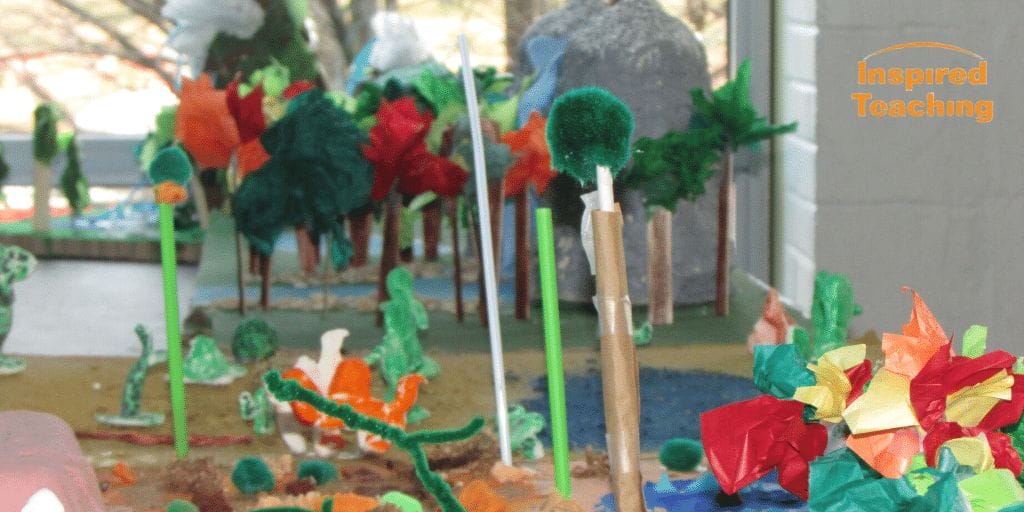The following activity is part of a series we’re creating to support students, teachers, and caregivers, during this unprecedented time. Read more about the project here. If you try this activity with your student(s), we’d love to see what you do. Share your journey via the #Inspired2Learn hashtag on your preferred social platform.
Created by: Pax Linson
Discipline: Art (Remember – all ‘art’ and creation is also science and math – mixing paint, balancing boxes, exploring stickiness in collages…etc.)
Age level: Early Childhood (ages 3-5)
Time: As long as you like.
Materials: A variety of art-making supplies though these do not have to be traditional. Consider some of the supplies suggested in this handout from early childhood educator Bev Boz. She also has a handy list of “science” materials you might want to consider.
What to do:
One of the best ways to keep students engaged (especially on rainy days) is to have them create, with whatever materials you might have on hand. In all scenarios, it’s important to remember these two Basic Principles
- Young children’s ‘art’ is about PROCESS, not PRODUCT. So the best way to support our young learners in their creative explorations is often to get out of the way. Avoid asking 3-5 year-olds to copy something from a model. Avoid situations where they try to copy you (you don’t really need to do a project along with them, just focus on facilitating their project). A corollary: coloring books are not helpful.
- Offer crayons over markers for young children. Markers don’t offer young children the needed fine-motor development because they don’t require much of a grasp.
What kinds of materials work best?
Collage
Collages are wonderful and can be made using anything that will stick (or that your kids think will stick!) on a piece of paper (any size) or cardboard. To encourage fine motor development, consider having young ones tear paper into pieces to use as they build their collage. Tissue paper is good for this.
Tempera Paint
This paint is usually washable and has enough texture to be applied with a variety of objects, not just paint brushes. Consider offering students tools like cut up vegetables, toy cars, leaves, rocks, string, marbles, and various kitchen utensils that can be used to stamp, roll, and apply in other ways to paper or cardboard.
Clay / Playdough
The best tactile experience can be achieved with actual clay which can be purchased online, but playdough can be easily created at home using common kitchen supplies. Here is a link to one recipe.
Various Containers for Building
You don’t need wooden blocks or Lego bricks in order for students to build wild and imaginative worlds. Cardboard boxes, empty plastic bottles, masking tape, and other containers work well for building projects. Consider saving any of this work for the next day – week, etc. to be changed, built upon, destroyed (happily), etc.
NOTE: Active little ones often will NOT want – or need – to sit at a table in a chair to do creative ‘artwork’. This may feel counterintuitive to us as adults, but if we can challenge ourselves to step outside our comfort zones, we can offer young learners a choice about where they work. Examples of locations include:
- Outside (on a table or right on the grass);
- A (newspaper covered) corner on the floor of the kitchen;
- For building projects, particularly those that do not involve paint, giving a child the freedom to set up their constructions throughout a room (on couches, under tables, through doorways) provides great scope for the imagination.
Inspired Teaching Connection
An Instigator of Thought teaches students how to think instead of doing the thinking for them – providing students with creative materials to explore and make with on their own is a great way of doing just that. When young children have the freedom to create at their own pace and explore the process rather than follow steps toward a particular product, their joy and imagination thrive. Better yet, you’ll find that young learners often persist longer at a task when it’s something they’re driving rather than something that they’re being told to do. This speaks to intrinsic motivation, and also to Inspired Teaching’s Core Element Student As Expert.
See our instructional model here.

